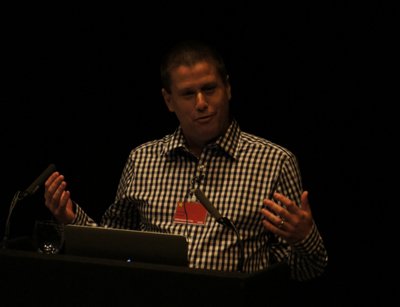A mere six weeks difference could have drastically altered the OpenStack project as we know it today.
It could have even be known as another name – Sangria, after the Spanish drink was a lead contender, Top Commander one of the more embarrassing options.
If Rackspace Hosting had decided to delay its launch of the open source software project for building the cloud, NASA – one of the biggest names associated with the project – may never have become involved.
Rackspace general manager and OpenStack Co-founder Jim curry, speaking at today’s EMEA OpenStack event in London, said timing for OpenStack has become one of the key elements of the project’s success – OpenStack now has more than 6,000 lines of open source code available.
Rackspace, which designed OpenStack to bring more choice to the way it would build out its own clouds, discovered that NASA was working on a project very similar to overcome similar problems.
It discovered this at the same time it had called on other industry players to provide feedback on the project.
“A group of folk at NASA had released some code into open source that our development team looked at and said “hey, this is pretty good, these guys seem like they are very interested in building an open-source cloud, they seem like they want to build something in terms of a community similar to ours”,” Curry said.
“We also looked at that and said NASA is actually a pretty good brand. If NASA is interested in getting involved in this project and building it, this could be really good for the project.”
Curry contacted Chris Kemp, then NASA CTO (Kemp now runs his own company Nebula which offers Infrastructure-as-a-Service offerings based on Open Stack).
“Confidentially, we are in the process of open sourcing our cloud stack and I am interested in seeing if there might be some synergies/opportunities for the two projects to work together,” an email Curry pulled up from his archive to Chris Kemp dated 4 June, 2010 displayed at the event read.
From this point on, things moved fast, according to Curry.
“Within a few hours we had our team on the phone with the NASA team talking about what we wanted to get done. About a week later we travelled to the research center in California and that is where the real magic happened,” Curry said.
Rackspace was already working with Swift for its object/blob store for the storage of data and NASA was in the process of building something similar, but it was incomplete.
“One of the things they (NASA) decided was “let’s just take your swift code, use it in our system and start form there”,” Curry said.
It worked both ways. NASA had already put a lot of work into Nova, a cloud computing fabric controller for IaaS and this became the code’s kernel.
Rackspace decided to use NASA’s Nova code as its base, placing its own code on top.
Curry said the success of OpenStack, which has been running for about two years, has been largely down to the similarity in goals for the use of the open code, and the amount of effort put in by members to not only make code open and contribute to user groups, but also in the documentation and paper work such a foundation requires.
He said the key goals adhered to by both were in the commitment to production, the acceleration of innovation through collaboration and the driving of standards and a united ecosystem.
OpenStack Foundation Executive Director Jonathan Bryce said the OpenStack team is now working on the Grizzly software release, which has just passed its first development milestone with more than 3999 bug fixes.
The Grizzly version of OpenStack has a software release date of April 13
Bryce said OpenStack has about 200 developers contributing code about every two days.
He said now OpenStack is looking to become its own legal entity with a “home” and a team dedicated to promoting the foundation and its work.

